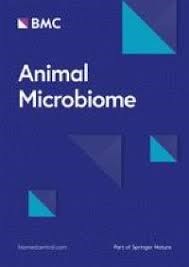Omics and imaging combinatorial approach reveals butyrate-induced inflammatory effects in the zebrafish gut

Abstract
Prebiotic feed additives aim to improve gut health by influencing the microbiota and the gut barrier. Most studies on feed additives concentrate on one or two (monodisciplinary) outcome parameters, such as immunity, growth, microbiota or intestinal architecture. A combinatorial and comprehensive approach to disclose the complex and multifaceted effects of feed additives is needed to understand their underlying mechanisms before making health benefit claims. Here, we used juvenile zebrafish as a model species to study effects of feed additives by integrating gut microbiota composition data and host gut transcriptomics with high-throughput quantitative histological analysis. Zebrafish received either control, sodium butyrate or saponin-supplemented feed. Butyrate-derived components such as butyric acid or sodium butyrate have been widely used in animal feeds due to their immunostimulant properties, thereby supporting intestinal health. Soy saponin is an antinutritional factor from soybean meal that promotes inflammation due to its amphipathic nature.
